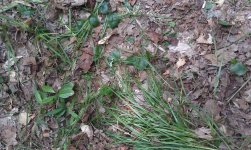S
springer1
Member
I was wondering how to calculate the probability of finding a fly dropped when tying it onto your line and came up with this draft formula.
I know it’s not correct because it doesn’t factor in whether you’re color blind which makes a big difference if you drop one on land. However I don’t know how to construct a single equation to take the C variable into consideration, or if the constants are correct, or if other variables are needed.
P = Probability of finding a fly dropped during tying.
W (ading) = Constant 2 if wading, constant 1 if on land.
C (olor blind) = Constant 2 if you’re color blind, constant 1 if not.
R (eserve) = Constant 3 you don’t have another fly like it in your box, constant 1 if you do.
F (eed) = Constant 2 if fish are feeding, constant 1 if it’s a slow day.
........1
------------- = P
..W * R * B
I know it’s not correct because it doesn’t factor in whether you’re color blind which makes a big difference if you drop one on land. However I don’t know how to construct a single equation to take the C variable into consideration, or if the constants are correct, or if other variables are needed.
P = Probability of finding a fly dropped during tying.
W (ading) = Constant 2 if wading, constant 1 if on land.
C (olor blind) = Constant 2 if you’re color blind, constant 1 if not.
R (eserve) = Constant 3 you don’t have another fly like it in your box, constant 1 if you do.
F (eed) = Constant 2 if fish are feeding, constant 1 if it’s a slow day.
........1
------------- = P
..W * R * B




